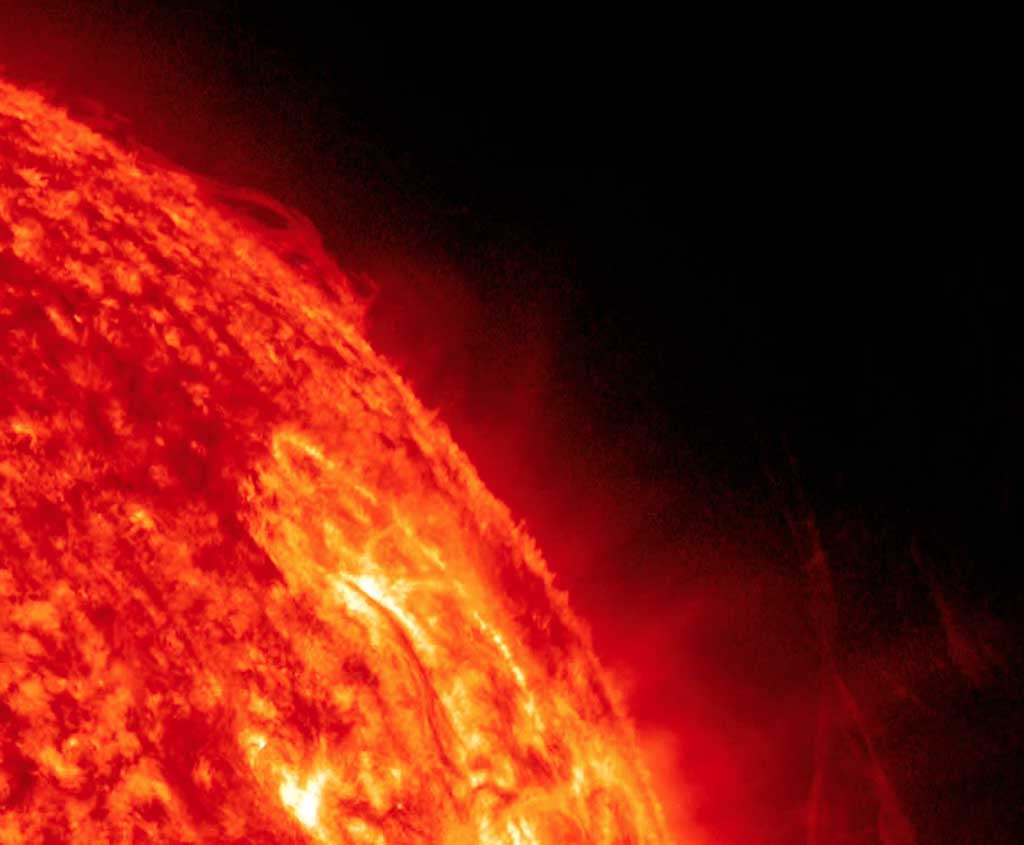No earthbound telescope can match the resolution and wavelength range of NASA’s Solar Dynamics Observatory (SDO). From a geosynchronous orbit above the longitude of White Sands, New Mexico (the site of its receiving station), SDO monitors the Sun 24/7. Because it takes images in rapid succession, solar physicists can create seamless time-lapse movies from them. SDO’s Atmospheric Imaging Assembly (AIA), for example, captures the Sun’s entire disk eight times every 10 seconds. And it takes those images at 10 different wavelengths, from visible light to the extreme ultraviolet.
We present here three movies compiled from AIA images during the first three months of 2013. The first shows the Sun at a wavelength of 30.4 nanometers March 16, when a large prominence bowed outward and then erupted during a period of nearly four hours. Following the eruption, a large cloud of rarefied gas appeared to hover above the Sun’s limb before fading away.
The second movie combines two extreme ultraviolet wavelengths (19.3 and 30.4 nanometers) to provide better detail. It shows a long strand of ionized gas, or plasma, that erupted from the Sun on January 31. During this movie, which compresses six hours of time into 19 seconds, the strand stretched and then erupted. Although the force of the eruption launched a lot of plasma into space, much of the material failed to escape the Sun’s gravity and fell back to the surface.
The final movie depicts a swirling cloud of plasma that churned above the Sun’s limb before finally erupting. Nearly 48 hours elapse during this 19-second movie, a period long enough that the Sun’s rotation shows up clearly. Although the plasma is hot throughout, it doesn’t all glow at the same temperature. Cooler regions appear dark against the warmer material swirling behind it. Like the previous movie, this one combines the view at 19.3 and 30.4 nanometers.
Video credits: NASA/SDO










